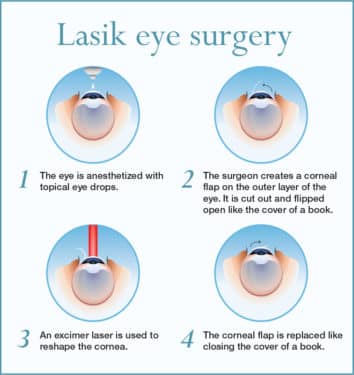Curious Concerning The Distinctions Between SMILE, LASIK, And PRK Eye Surgeries?
Curious Concerning The Distinctions Between SMILE, LASIK, And PRK Eye Surgeries?
Blog Article
Article Writer-Humphries Wilder
If you have actually been considering SMILE eye surgical procedure, you might question how it stacks up against LASIK and PRK. Each treatment has its own collection of benefits and considerations. From get redirected here to possible threats, there are crucial distinctions you ought to be aware of before choosing. Recognizing these differences will certainly aid you make an educated choice that aligns with your specific needs and expectations. Interested to know more about just how these treatments contrast carefully? Continue exploring to gain a thorough understanding of SMILE, LASIK, and PRK.
SMILE Eye Surgical Procedure Introduction
If you're thinking about SMILE eye surgical treatment, you'll find it to be a minimally invasive procedure with a quick recuperation time. Throughout SMILE (Little Laceration Lenticule Removal), a laser is utilized to create a little, accurate laceration in the cornea to eliminate a small item of cells, improving it to remedy your vision. This differs from LASIK, where a flap is created, and PRK, where the outer layer of the cornea is entirely gotten rid of.
One of the essential benefits of SMILE is its minimally intrusive nature, leading to a faster healing process and much less discomfort post-surgery. The healing time for SMILE is fairly fast, with numerous people experiencing improved vision within a day or 2. This makes it a preferred choice for those seeking a hassle-free and efficient vision modification treatment. Furthermore, SMILE has been shown to have a reduced risk of completely dry eye syndrome contrasted to LASIK, making it a desirable option for individuals worried about this possible negative effects.
Distinctions Between SMILE, LASIK, and PRK
When comparing SMILE, LASIK, and PRK eye surgeries, it is essential to comprehend the unique techniques used in each treatment for vision adjustment.
SMILE (Small Incision Lenticule Removal) is a minimally invasive procedure that entails developing a little cut to remove a lenticule from the cornea, improving it to deal with vision.
LASIK (Laser-Assisted In Situ Keratomileusis) includes developing a thin flap on the cornea, utilizing a laser to reshape the underlying cells, and afterwards rearranging the flap.
PRK (Photorefractive Keratectomy) eliminates the external layer of the cornea before reshaping the tissue with a laser.
The primary distinction hinges on the way the cornea is accessed and treated. SMILE is flapless, making it a good choice for individuals with slim corneas or those associated with contact sporting activities. LASIK uses fast aesthetic recuperation due to the flap development, but it might pose a higher threat of flap-related issues. PRK, although having a much longer recuperation duration, prevents flap-related issues altogether.
Recognizing these variations is essential in selecting one of the most appropriate procedure for your vision correction needs.
Benefits And Drawbacks Comparison
To assess the advantages and drawbacks of SMILE, LASIK, and PRK eye surgical treatments, it's important to think about the specific benefits and possible limitations of each treatment. SMILE surgery offers the advantage of a minimally invasive procedure, with a smaller sized cut and possibly quicker recovery time compared to LASIK and PRK. https://observer.com/2019/11/elon-musk-neuralink-ai-brain-chip-podcast-update/ decreases the threat of completely dry eye post-surgery, an usual negative effects of LASIK. However, SMILE may have constraints in dealing with higher levels of nearsightedness or astigmatism contrasted to LASIK.
LASIK surgery provides rapid visual recovery and marginal pain during the procedure. It's highly efficient in dealing with a variety of refractive mistakes, including myopia, hyperopia, and astigmatism. Yet, LASIK lugs a risk of flap problems, which can impact the corneal framework.
PRK eye surgery, while not as popular as LASIK, stays clear of producing a corneal flap, reducing the danger of flap-related issues. It appropriates for clients with thin corneas or irregular corneal surfaces. However, PRK has a longer recovery time and might include much more discomfort throughout the recovery procedure.
Verdict
So, when it involves choosing between SMILE, LASIK, and PRK, think of it like selecting the ideal set of shoes. SMILE resembles a smooth, comfortable pair of tennis shoes - quick and simple.
LASIK is much more like fashionable high heels - showy and quickly, yet with some potential risks.
PRK is like sturdy hiking boots - reputable and sturdy, yet calling for a bit even more effort and time.
Ultimately, the best choice depends upon your specific demands and preferences.
